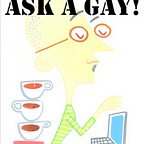LGBTQIA+: Let’s Get Behind Those Queer Initials
I read in the newspaper (yes, I’m that old) about “gay” rights. Sometimes I read about the “LGBT community.” I’ve also read about “lesbians,” and “homosexuals.” Sometimes I see the word “queer” used by gay people, which I thought was offensive. And the other day I saw a really strange set of letters — LGBTQIA+ — which I think means “gay.” It’s all very queer (in the old-fashioned sense of the word) to a heterosexual woman like me who would call herself “straight” except for what arthritis has done to my back. Where did all these letters come from? Is there a dictionary somewhere that explains all this? What is the right way to refer to my homosexual/gay/lesbian/queer/LGBTQIA+ friends so I don’t offend them?
Sincerely,
Abby Cedarian
Dear Abby:
A few years ago a law went into effect in California that requires public schools to teach gay history. Some of us wish the state also would provide classes to help gay kids (and continuing education to help gay adults) keep up with the evolution in how we homosexuals describe ourselves.
First thing you need to know is that “homosexual” is the word that encompasses both women who have a thing for women and men who have a thing for men. But you also should know that it’s an awkward, clinical word that isn’t much used outside of academic research. Even newspapers, those custodians of traditional language, have abandoned it. Whereas The New York Times reported in 1963 that homosexuals were privately calling one another “gay,” in 1987 the newspaper was routinely using “gay” in referring to members of the homosexual community.
Lesbians, thought by most researchers to be a minority within the overall homosexual world, eventually insisted on using their own moniker so as to stand out in a homosexual culture pretty much dominated by men (gay or straight, we guys are pretty insensitive that way). So “gay” generally came to mean a homosexual man. And “lesbian” was used to refer to a homosexual woman. However, when someone wants to refer to the entire same-sex-loving crowd, “gay” still is the word that’s often used for want of anything better.
After that, it gets more political. Leaders of the gay rights movement, which really took off in 1969, began to bring other sexually diverse groups under what became the lesbian and gay tent. The “T” in LGBT, for example, stands for “transgender,” a term that describes people who see themselves as being trapped in the body of the wrong sex. A biological man who in his heart and mind is a woman, would describe himself as transgendered. For a female example of that, consider Chastity, now Chaz, Bono. Interestingly, transsexuals aren’t necessarily homosexual. A guy who becomes a woman and goes ga ga for guys clearly isn’t seeking a same-sex partner. You’ll note that Chaz has dated a girl, which means he’s definitely not a lesbian.
The “B” refers to bisexuals, a group that gay men are divided about. Many gay men consider bisexual men to be guys unwilling to own their homosexuality — fence straddlers, if you will. “Q” has long meant “queer,” once an insult and now something younger men embrace (not so much those Boomers). But to some it now also stands for “questioning,” a term that describes those who are uncertain of their sexual orientation or gender identification and are exploring the options. Finally there are the “I’s.” They are “intersexuals,” people who physically possess characteristics (and often distinctive organs) of both sexes. “A” can mean “asexual,” which is someone who isn’t very sexually interested in anyone, or “ally,” which describes a heterosexual person who loves and supports his or her (or their, but that’s another column), gay, lesbian, bisexual, transgender, intersexual, questioning, queer, and asexual friends.)
So what do you call your homosexual / gay / lesbian / queer / bisexual / transgender / questioning / intersexual friends? Keep it simple and go with “gay” if it’s a guy into guys and “lesbian” if it’s a gal into gals. “Trans” and “queer” are best used only with friends with whom you have a very intimate relationship. And if it’s an intrasexual, just call that friend by his or her (or their) first name.
Queer and always questioning,
Hank
Questions you can’t bring yourself to ask your gay friends and neighbors? Or maybe you’re just queer and befuddled. Send them to Hank@AskAGay.net. (Warning: The answers will be factually correct, but might not be politically correct)
